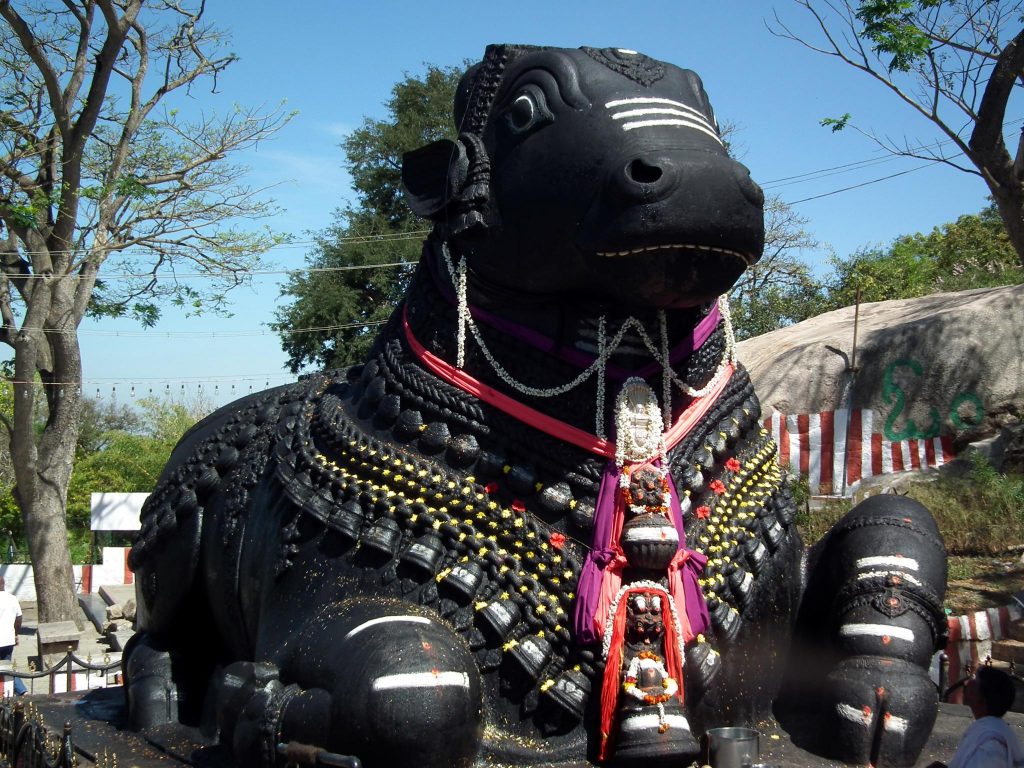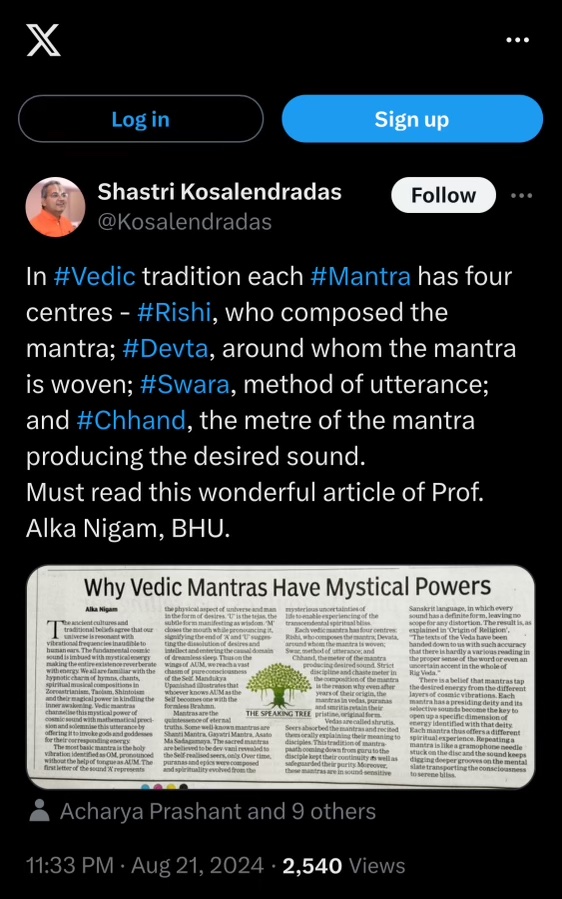
Nandi, the bull and the vahan of Shiva is a very loveable and formidable figure in Hindu religion. His pure love and intense devotion for Shiva has attained him the status of godhood. Nandi and Shiva have become inseparable in our imagination.
In Indian spirituality there exist two realities – one that is for the eyes and therefore direct and for general consumption and the other that is deep and fertile and has symbolic meaning. Nandi literally means ‘anand’. Bull stands for strength and physical energy. It represents life energy or primordial energy. A clear manifestation of this life energy is human body. Nandi is seen seated outside the Shiva temples. Nandi symbolically is the body that is waiting eagerly for the union with its Lord who is residing in the temple-cave inside. Our religious scriptures tell us the importance of human body which has the capacity and power to carry our soul to its destination of self realization–the only goal and purpose of this body. If the salvation is not reached in one lifetime the efforts could be renewed again in next life. In Gita Lord Krishna says that we take with us all the fruits of our good karma of one life and carry them over in our next life. Thus no good karma goes in vain. And gradually our subsequent efforts make it pure enough to reach our desired goal. . Jataka stories a part of early Buddhist literature are an example of this. In these stories we come to know of the many previous births of Gautama Buddha in human and animal bodies. Each birth of the same soul in various forms of bodies made the consciousness purer and eventually in the human body of Gautama his efforts blossomed and he became Buddha – the awakened one. No wonder why body that too of human form is considered so precious.
Our sages have prescribed systematic steps leading to the communion with the ultimate. A persistent withdrawal of consciousness from outward activities leads to undisturbed brooding and culminates in intense concentration– the result is, the sense of identity is lost, mind and body become inert to all external impressions. It is not a stage of passivity: it is full of awareness of the awakening of divinity inside. Nandi carries these virtues in his conduct and these are manifested in his still appearance too. If we look at Nandi we feel that though Nandi is in the world sitting outside the temple, he is not of the world because he is just meditating on his Lord . He is a symbol of eternal faith and eternal yearning of the human soul for the love of God. The ultimate goal of human body is to experience self -realization no matter how long is the wait. Eternal waiting with eternal patience and unwavering faith for that realization makes Nandi a true devotee of Lord Shiva and earns him an unparalleled reverence and love of devas and mortals alike. Anybody entering the temple of Lord Shiva, first takes the blessings of Nandi. It is said that any desire if uttered into the ears of Nandi first is sure going to be fulfilled.
Nandi represents the relation of body with the Ultimate. Physical body is the key that opens the gates of paradise because only through human body the Self is realized. The holy scriptures lay emphasis on this truth again and again through different perspectives. In Hindu philosophy introspective meditation realized through body is the basic foundation towards God realization. In Kathopnishad the entire chain of the process is made clear. It says above the senses is mind, above the mind is the intellect, above the intellect is the ego, above the ego is the unmanifested seed, the primal cause and beyond the unmanifested seed is Brahman. None can behold Him with the physical eyes. Yet in the heart is He revealed through meditation, when all the senses are stilled, mind at rest and intellect wavers not, in such a calm state God is perceived. We do not get this faith from the outside world but “from what is highest within us.” In Kathopnishad, the god of death tells Nachiketa that this highest within us is the supreme person, the size of a thumb who dwells forever in the hearts of all beings. In Gita the same version comes from the mouth of Lord Krishna that He is seated in the region of heart of all beings. Mystics and enlightened yogis tell us that the kingdom of God is within us.
Nandi is looking with longing at the Lord inside the sanctum sanctorum. Metaphorically he is the gross body placed amid the hectic activities of the world and like a patient yogi single -mindedly focused on his Lord residing in the heart. Through his example Nandi reiterates the emphasis laid on the great significance of this mortal body which is resplendent with intuition and thus a direct link with the Supreme.

Leave a Reply